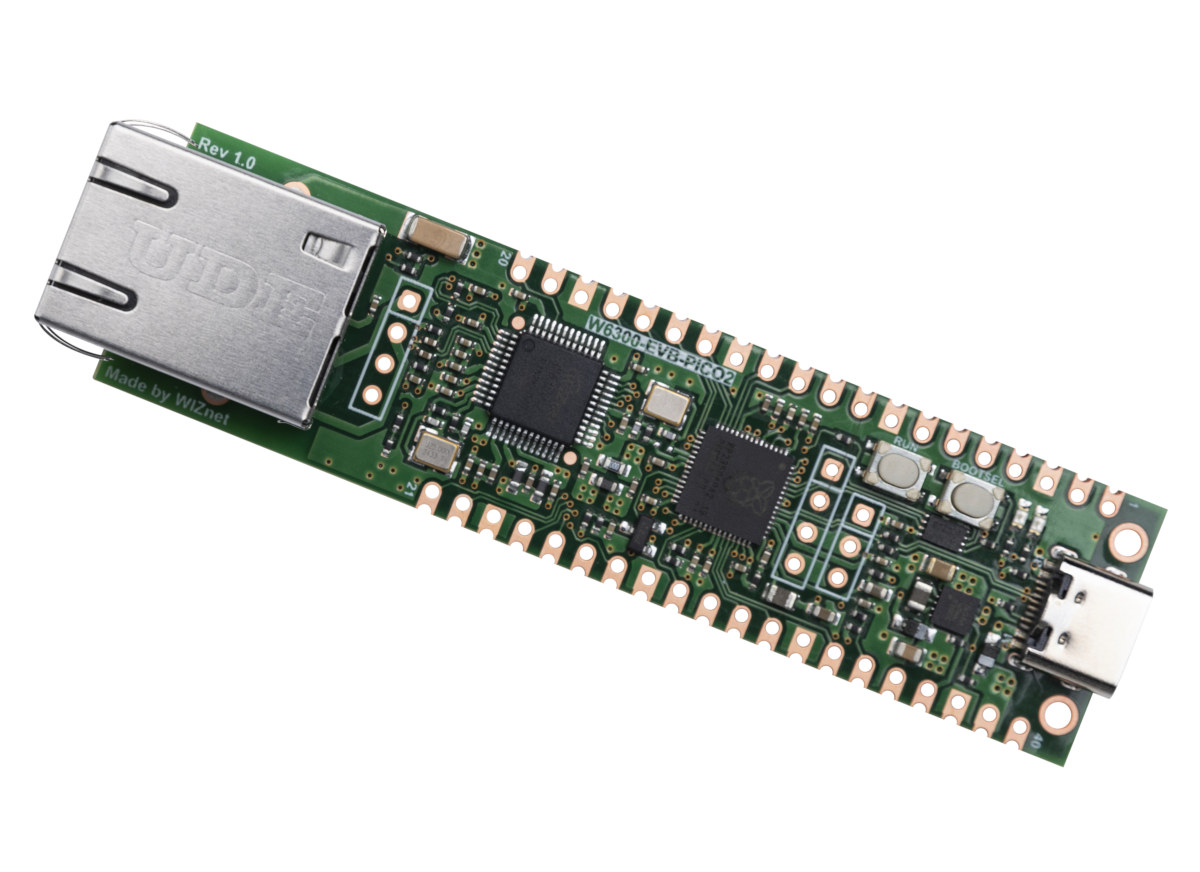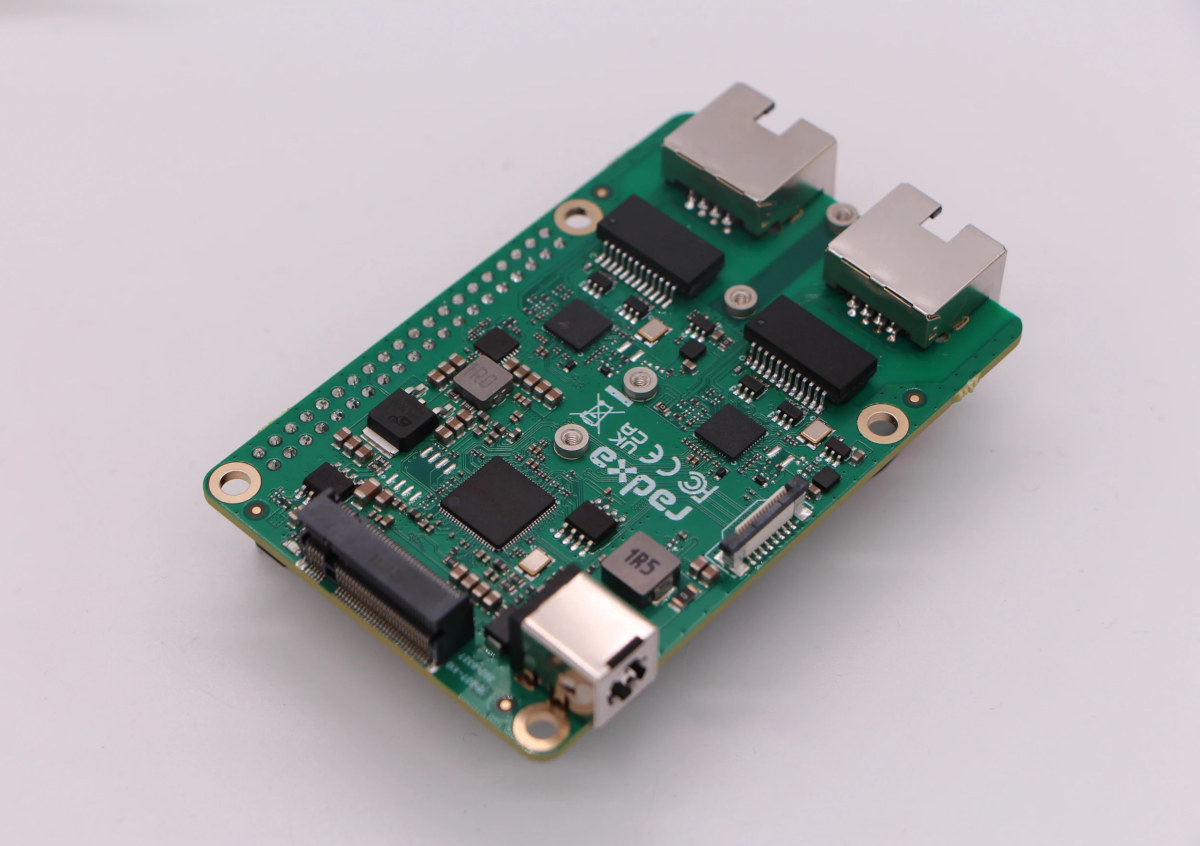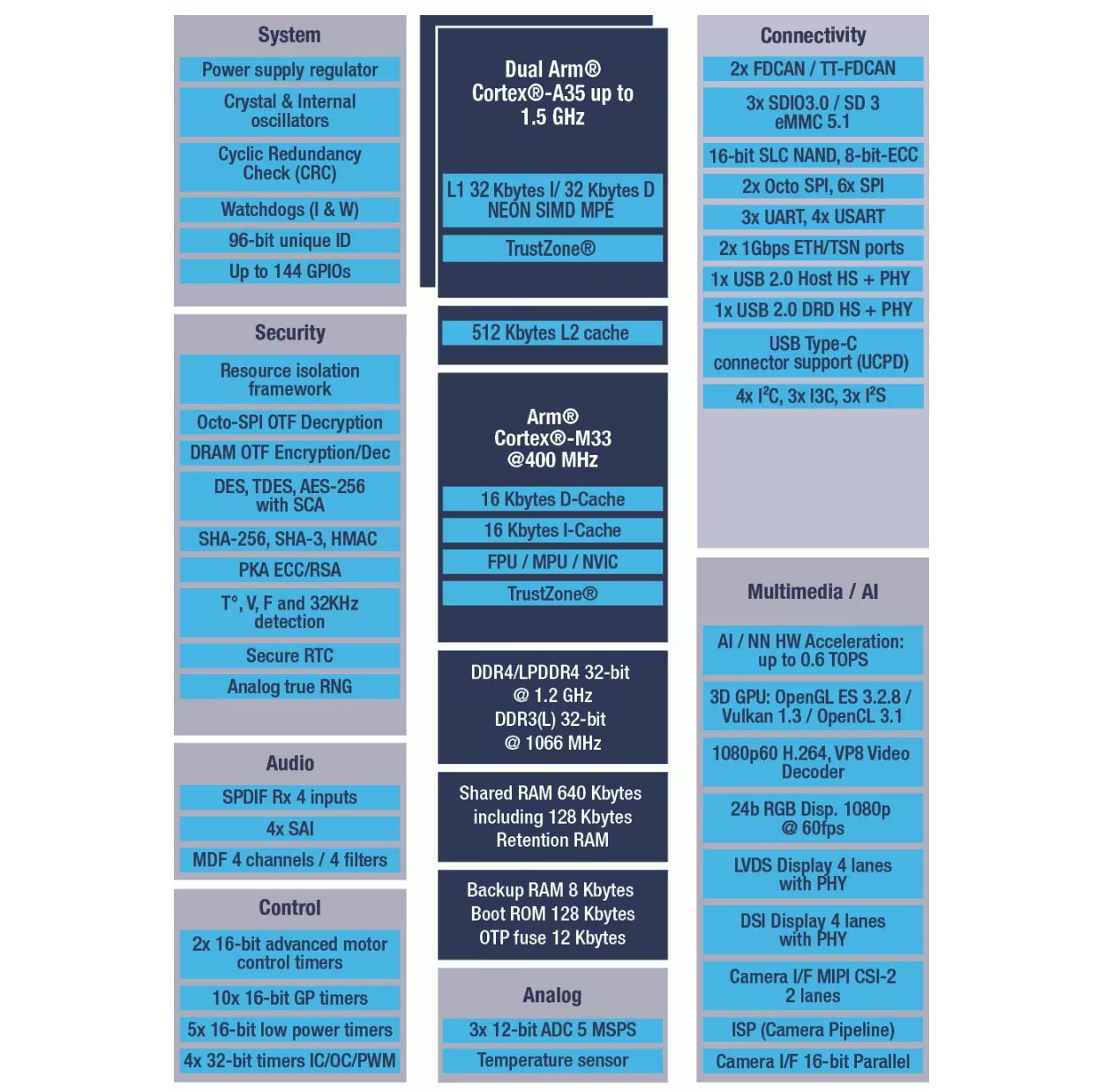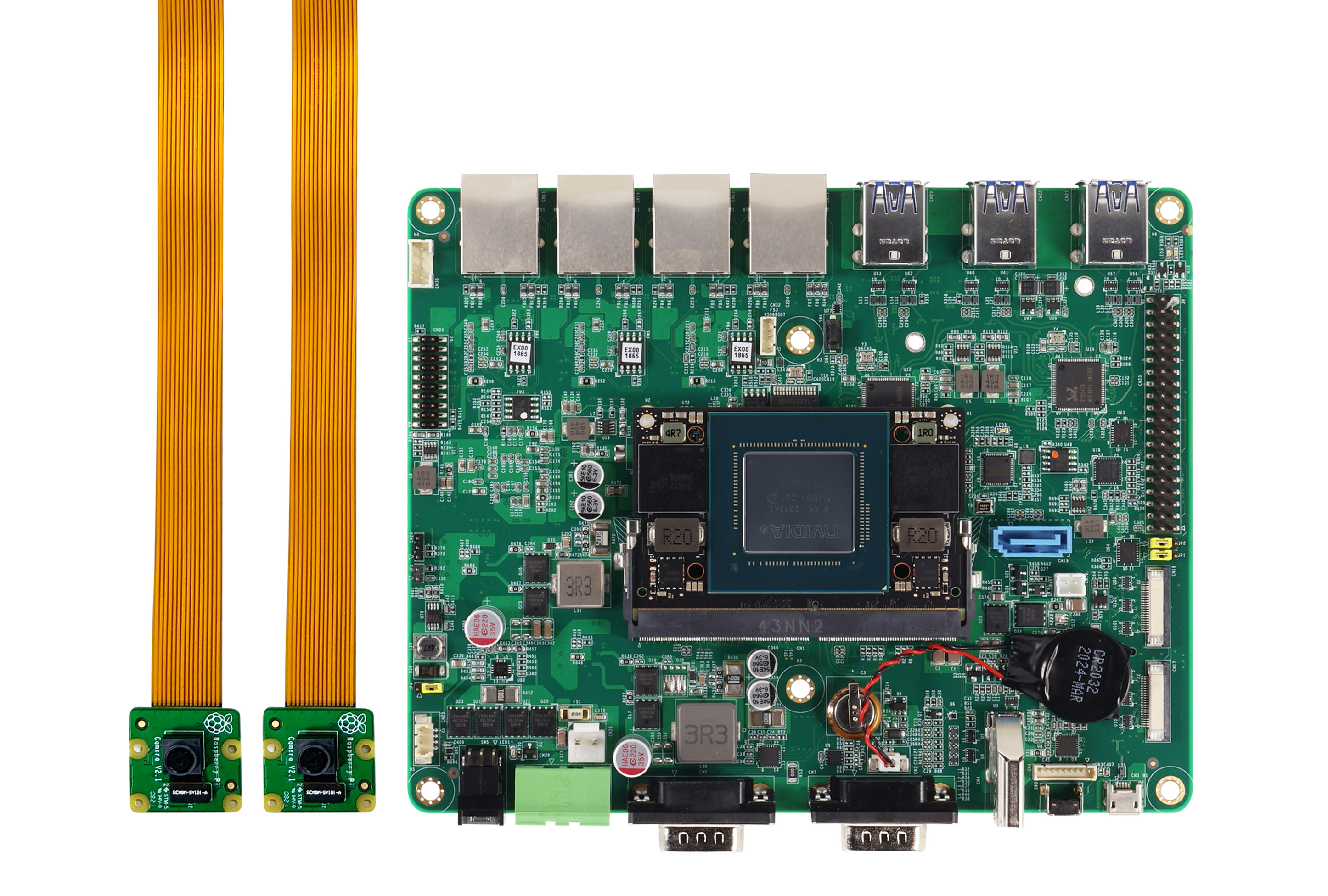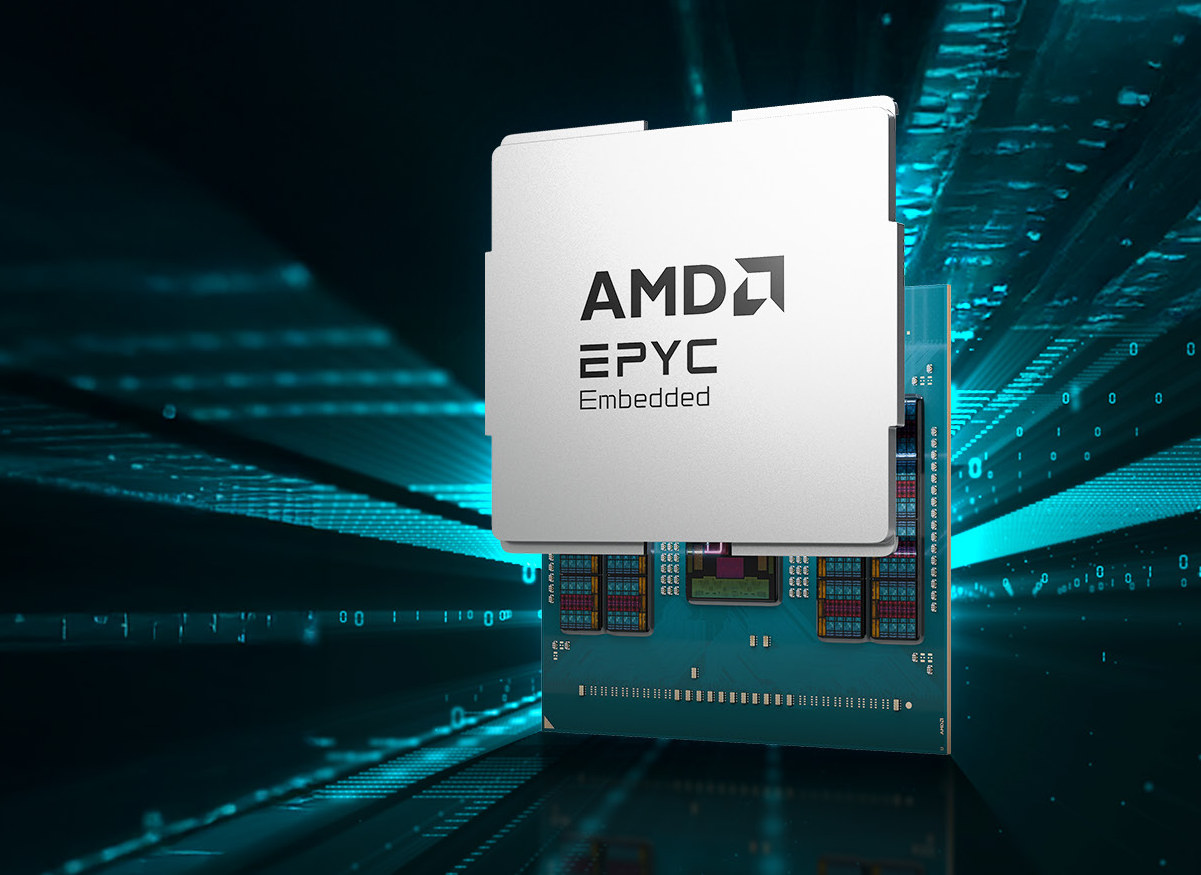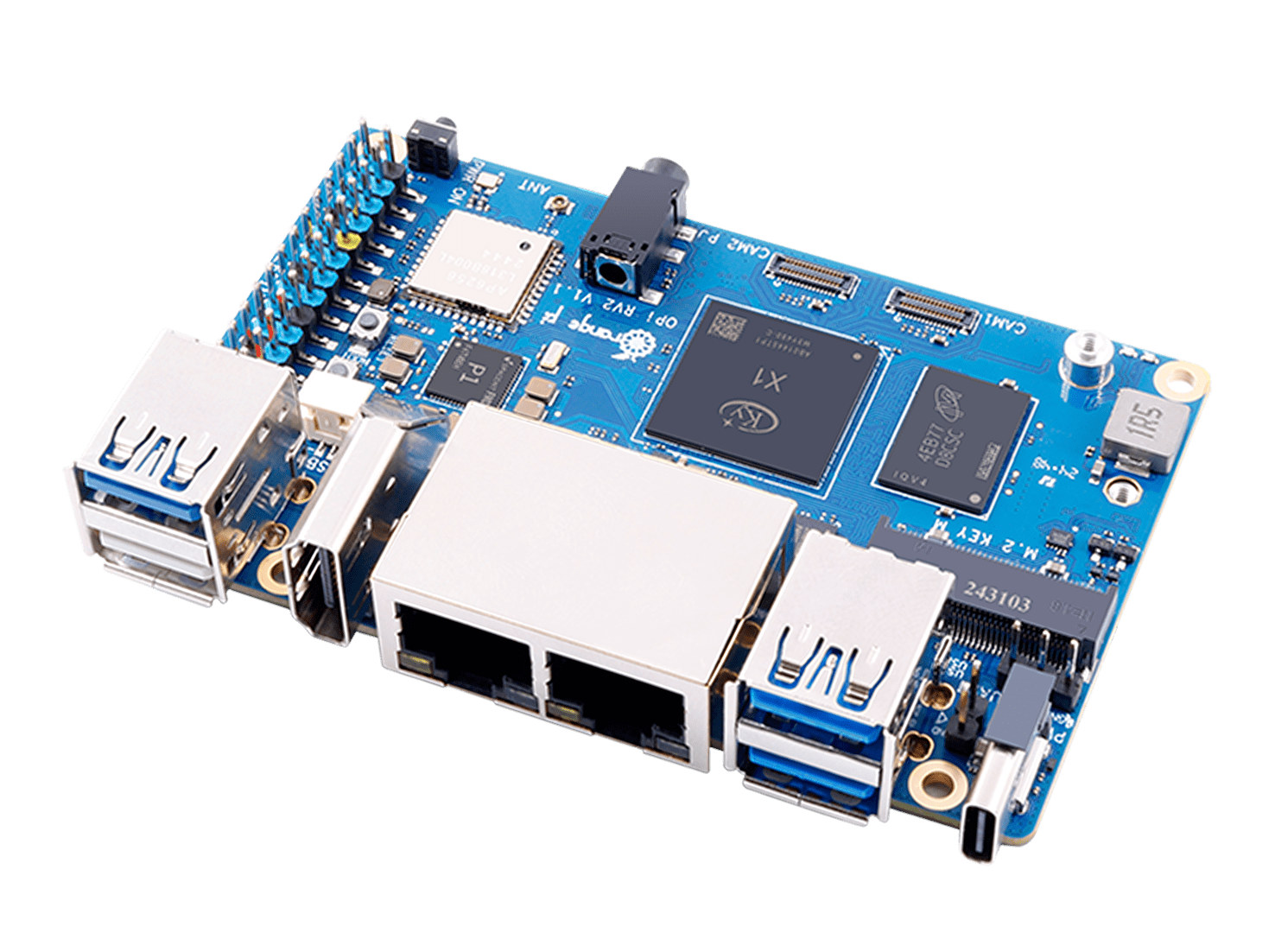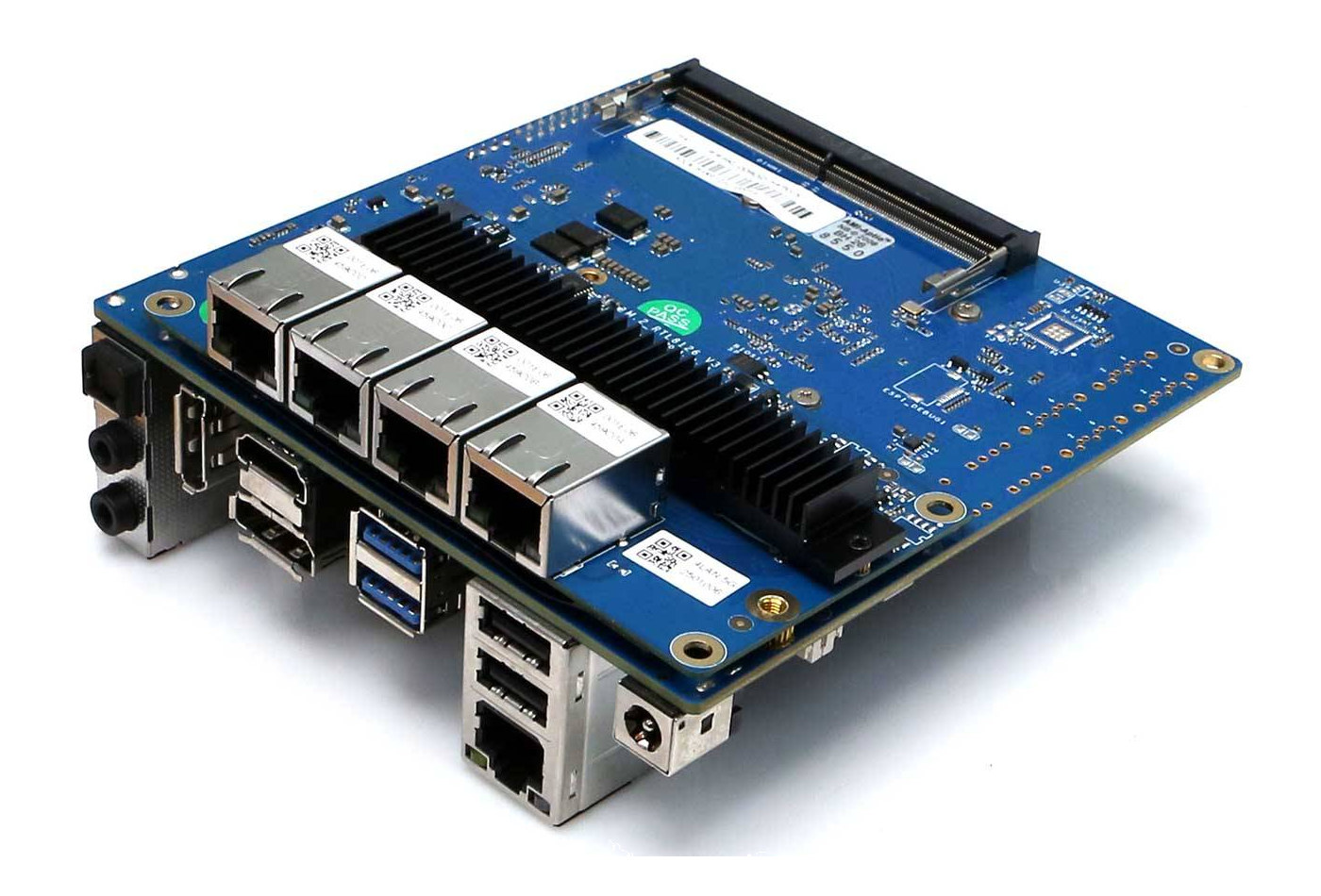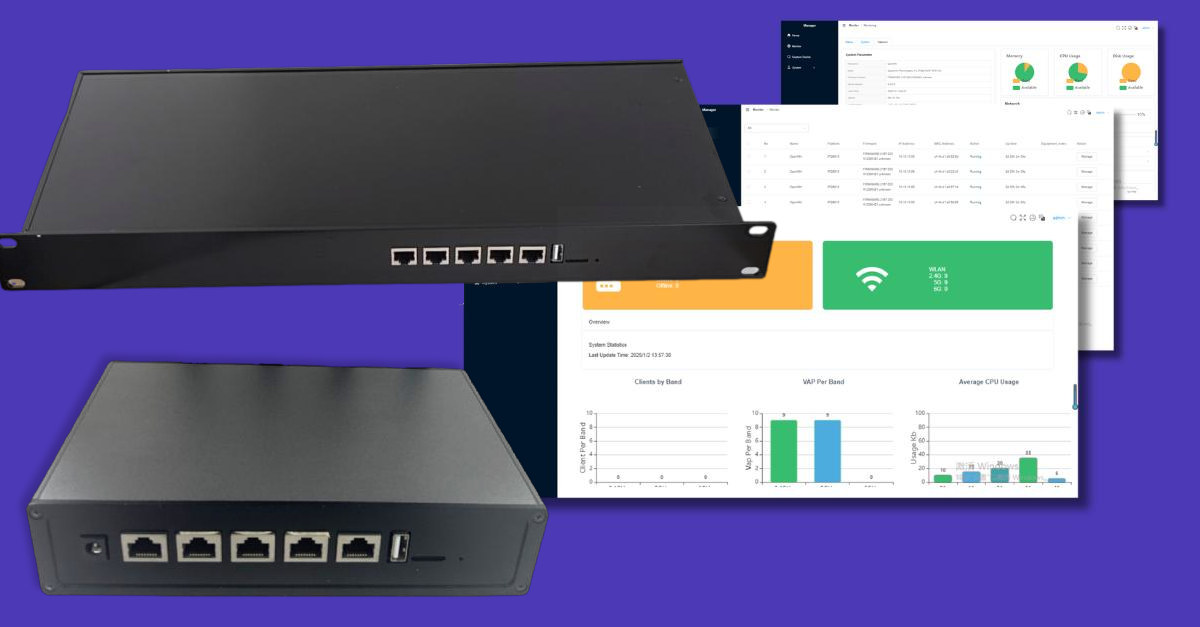WIZnet W6300-EVB-Pico2 is a development board that combines a Raspberry Pi RP2350 MCU with the company’s new W6300 QSPI Ethernet controller capable of 80+ Mbps data rates. WIZNet has made several 10/100Mbps Ethernet controllers over the years that connect to microcontrollers via SPI, but the speed is often limited to 15 to 70 Mbps due to a low SPI clock frequency and small buffers. The WIZNet W6300 Ethernet controller can deliver higher speed thanks to a 150MHz system clock, a QSPI interface with four data lines, 64KB SRAM, and 4KB TX/RX buffer for each of the 8 sockets. W6300 QSPI Ethernet controller W6300 features and specifications: Host Interface – High-speed QSPI (MODE 0/3), system bus with 2 address signals & 8-bit data Internal 32KB SRAM for Tx/ Rx buffers (64KB in total) 8x independent sockets with 64KB Memory 10BaseT / 10BaseTe / 100BaseTX Ethernet PHY Integrated Auto negotiation (Full and […]
Radxa Dual 2.5G Router HAT adds 2.5GbE networking and M.2 NVMe storage support to Raspberry Pi 5-compatible SBCs
The Radxa Dual 2.5G Router HAT is an expansion board adding 2.5GbE networking and an M.2 PCIe x1 socket for NVMe SSD storage to the Raspberry Pi 5 and compatible SBCs with a PCIe FFC connector. We had previously seen Raspberry Pi 5 HATs with 2.5GbE such as the Pineberry HatNET! 2.5G, or even one with 2.5GbE and NVMe SSD (52Pi W01 U2500 HAT), but the Radxa Dual 2.5G Router HAT is the first to implement two 2.5 Gbps Ethernet ports to enable routing, and also features an NVMe SSD as a bonus. Radxa Dual 2.5G Router HAT specifications: Supported SBCs – Raspberry Pi 5, Radxa ROCK 2F, Radxa ROCK 2A, Radxa ROCK 5C, the upcoming Radxa 4D (RK3576), and potentially others PCIe Switch – ASM2806 PCIe 3.0 switch chip with PCIe Gen3 x2 upstream and four PCIe 3.1 lanes downstream up to 8GT/s Storage – 1x M.2 M-Key socket […]
STMicro STM32MP23 Cortex-A35/M33 MPU features a 600 GOPS NPU for industrial IoT and ML applications
STMicroelectronics STM32MP23 is a dual-core Cortex-A35 general-purpose microprocessor (MPU) with a Cortex-M33 real-time core, and 600 GOPS of performance operating at up to 125°C and designed for industrial and Internet-of-Things (IoT) edge computing, advanced HMI, and machine-learning (ML) applications. It follows the STM32MP25 series unveiled in 2023 and launched the following year as the first member of the STM32MP2 family. The STM32MP23 is a cost-down version of the STM32MP25 with similar specifications (and pin-to-pin compatible packages), but the new family has a weaker 0.6 TOPS NPU, and tops at two Ethernet ports for the high-end parts instead of three. Ditto for CAN Bus interfaces (2x vs 3x). Other changes include a 16-bit memory interface and the lack of PCIe and USB 3.0 interfaces. STM32MP23 specifications: CPU – Single or dual Arm Cortex-A35 cores running at up to 1.5 GHz or 1.2 GHz with 512KB L2 cache Real-time MCU – Arm […]
NV8600-Nano AI Developer Kit features NVIDIA Jetson Orin Nano 8GB, quad GbE, Raspberry Pi Camera Module 2
AAEON NV8600-Nano AI Developer Kit is based on a 67 TOPS NVIDIA Jetson Orin Nano 8GB and ships with a carrier board with quad GbE, a Raspberry Pi Camera Module 2, a fan kit (heatsink with fan), and a 60W power adapter. The carrier board is also equipped with a 256GB M.2 2280 M-key NVMe SSD, a SATA connector, HDMI 1.4 video output, two MIPI CSI connectors compatible with Raspberry Pi Camera Modules, six USB 3.2 Gen 2 Type A ports, a few serial interfaces, a 40-pin GPIO header compliant with the Jetson Orin Nano (Super) developer kit, and two more M.2 sockets for wireless/cellular expansion. NV8600-Nano AI Developer Kit specifications: NVIDIA Jetson Orin Nano 8GB Module CPU – 6-core Arm Cortex-A78AE v8.2 64-bit CPU @ 1.7 GHz with 1.5MB L2 + 4MB L3 GPU – 1,020 MHz NVIDIA Ampere architecture with 1024 CUDA cores and 32 tensor cores Video […]
5th Gen AMD EPYC Embedded 9005 Series Zen 5 processors supports up to 6TB DDR5 memory, up to 160 PCIe Gen 5 lanes
AMD has just introduced the 5th Gen AMD EPYC Embedded 9005 Series “Zen 5” processors designed for embedded systems with a focus on longevity (7 years), reliability, and system resiliency, and targeting networking, storage, and industrial edge systems with support for up to 6TB of DDR5 memory, up to 160 PCIe Gen5 lanes with CXL 2.0. The EPYC Embedded 9005 Series processors are offered with 8 to 192 cores in a single socket and deliver up to a 1.3x faster networking process and 1.6x faster storage. The company also claims a 1.3x increase in socket throughput and 1.3x better performance/Watts compared to the competition thanks to the new Zen 5c architecture. AMD EPYC Embedded 9005 highlights: CPU sub-system AMD EPYC Embedded 9745 to 9965 – Zen 5c architecture up to 12x core complex dies (CCDs), 192x cores, 384x threads AMD EPYC Embedded 9015 to 9655 – Zen5 architecture up to […]
Orange Pi RV2 – A $30+ RISC-V SBC powered by Ky X1 octa-core SoC with a 2 TOPS AI accelerator
While the Orange Pi RV RISC-V SBC introduced at the Orange Pi Developer Conference 2024 last year is yet to be launched (should be up in a few days), the company has just launched the Orange Pi RV2 powered by the Ky X1 octa-core RISC-V SoC with a 2 TOPS AI accelerator, up to 8GB LPDD4X, optional eMMC flash moduyle, two M.2 sockets for storeage, dual gigabit Ethernet, WiFi 5, and more. While RISC-V has made a lot of progress over the years, Linux RISC-V SBCs were often synonymous with relatively expensive hardware for developers, since software is often unsuitable for production, at least for applications using graphics. The Orange Pi RV2 addresses the cost issue since the octa-core RISC-V SBC sells for just $30 to $49.90 depending on the configuration. Orange Pi RV2 specifications: SoC – Ky X1 CPU – 8-core 64-bit RISC-V processor GPU – Not mentioned VPU […]
ODROID-H3 and H4 SBCs get NetCard 3 card with four 5Gbps Ethernet ports
Hardkernl NetCard 3 is an expansion card with four 5Gbps Ethernet ports designed for the ODROID-H3 and ODROID-H4 SBCs and adding to the two 2.5GbE ports on the Intel Jasper Lake and Alder Lake-N single board computers. It follows the H2 Net Card with four 2.5GbE ports introduced in 2021 for the ODROID-H2, and tested by Ian with the ODROID-H3+ SBC in 2023. Hardkernel ended up selling more than expected, so they designed the Netcard 3 with 5GbE ports as an upgrade. It remains to be seen whether 5Gbps networking will be as popular as 2.5GbE or users will prefer moving to 10GbE hardware instead… NetCard 3 specifications: 4x 5Gbps Ethernet ports via RealTek RTL8126 5GbE controllers. M.2 edge connector with PCIe Gen3 x4 signaling Cooling with a long heatsink on RTL8126 controllers Compatible with ODROID-H3/H3+ and ODROID-H4/H4+ only, and not earlier ODROID-H2/H2+ boards You may need to flash a […]
WL-AC1000 AP controller can manage large fleets of wireless routers and access points
Wallys Tech WL-AC1000 is an access point (AP) controller designed to manage and optimize the operation of multiple access points (APs) within large-scale wireless networks that you may find in factories, airports, hotels, train stations, etc… The WL-AC1000 is powered by a quad-core Arm processor coupled with 1GB RAM, 8MB NOR flash, and 256MB NAND flash. It is equipped with four GbE ports and one 2.5GbE port to connect the access points through switches. It’s available as a desktop version and a 1U enclosure to mount in a rack. Wallys Tech WL-AC1000 specifications: SoC – Quad-core ARM 64-bit A53 @ 1 .8 GHz processor (likely some Qualcomm QCS part) System Memory – 1GB (2x 512MB) DDR3L Storage 8MB NOR flash 256MB NAND Flash Networking Gigabit Ethernet RJ45 port with PoE 3x Gigabit Ethernet RJ45 ports 2.5Gbps Ethernet RJ45 port Power Supply – 24V DC Dimensions WL-AC1000-E – 192 x 122 […]


